Dive into Yayoi Kusama’s sparkling mirrored chambers, catch a glimpse of Richard Jackson’s Rooms or experience immersion with Hito Steyerl: These artist rooms open up new worlds beyond normality.
1. Richard Jackson, “Rooms” , since 2002
With paint hoses, motorized pumps and bright colors, the cartoon-like figures, animals and objects in Richard Jackson’s “Rooms” become part of the creative act themselves. Hence in “The Dining Room”, a father drops his pants on a laid kitchen table, while “Delivery Room” offers insights into a kind of brutal birthing scene. And every one of the “Rooms” is sprayed with paint. In this project, Jackson gives us an insight into intimate scenes, combining them with provocative wit and detaching the artist from the artwork itself. Viewers suddenly find themselves at the center of the action, becoming both investigators and voyeurs at the same time.

2. Yayoi Kusama “Infinity Mirror Rooms”, since 1965
To infinity and beyond…The Japanese artist designed the first of these unique mirrored spaces back in the 1960s, but her rooms have seen a sharp rise in popularity as a result of social media. The feeling of standing inside one of these fully mirrored cubes illuminated by colorful LED lights or filled with Kusama’s surreal, spotted (tentacle) sculptures is the ultimate immersive experience. Detached from time and space, visitors have an opportunity to stare into infinity.
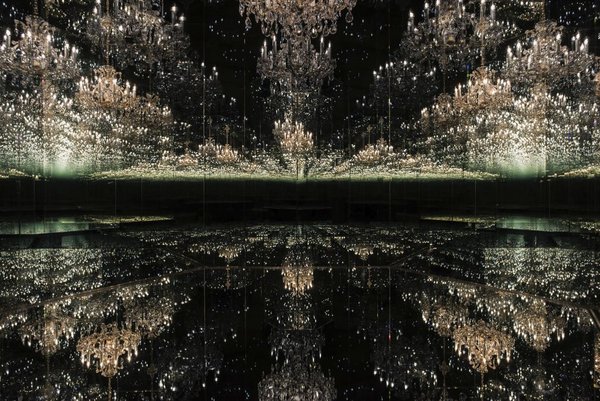
Yayoi Kusama, Chandelier of Grief 2016/2018 Tate Presented by a private collector, New York 2019 © Yayoi Kusama, Image via www.tate.org.uk
3. Walter de Maria, “The New York Earth Room” , 1977
Anyone planning a trip to New York City should be sure to include a visit to 141 Wooster Street. The second floor of this inconspicuous, typical SoHo residential building contains Walter de Maria’s “The New York Earth Room”. Ever since 1980, 250 cubic yards of dark, glistening with moist soil has covered the entire floor of a 3,600 square feet apartment. That said, you can only view this spatial installation from a distance and from behind a glass screen, however, and you are definitely not permitted to walk on the soil. De Maria first came to fame for his works in Minimal and Concept Art in the New York avantgarde scene during the 1960s. Another of his projects, “The Vertical Earth Kilometer”, was sunk into the earth in 1977 as part of documenta VI in Kassel.
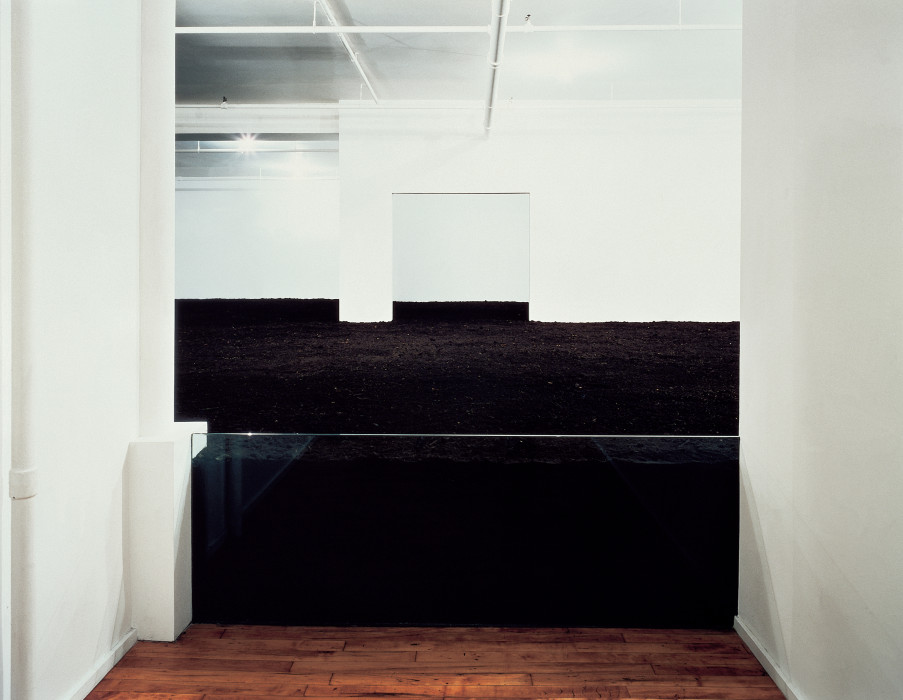
Walter De Maria, The New York Earth Room, 1977. © Estate of Walter De Maria. Photo: John Cliett, Image via www.diaart.org
4. Mark Dion, “Toys’R’Us (When Dinosaurs Ruled the Earth)”, 1995
Mark Dion is known for combining art and nature. In his installations, he arranges a variety of objects into a themed space or as a cabinet of curiosities, as natural history museums often do – often with a tongue-in-cheek approach. Hence, at first glance “Toys’R’Us (When Dinosaurs Ruled the Earth)” seems to be the room of a child who is deeply entrenched in the dinosaur phase (Dion himself is a big dino-fan), yet on closer inspection the room addresses issues such as over-consumption and the extinction of species.
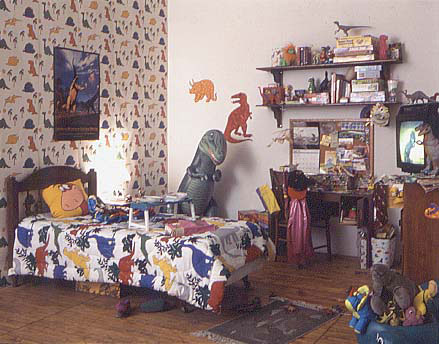
Mark Dion, When Dinosaurs Ruled the Earth (Toys R U.S.), 1995
© Mark Dion, Image via wikiart.org
5. Edward & Nancy Reddin Kienholz, “The Caddy Court”, 1986-87
A Dodge crossed with a Cadillac provides space for one of the most bizarre courts the art world has ever seen: Edward and Nancy Kienholz’s “The Caddy Court” is presided over by nine supreme court judges created using classic black robes topped with stuffed animal heads in various stages of decomposition. Like a fable on acid. The Kienholzes have become known for their unsparing, strongly polarizing approach to complex socio-political themes such as child abuse, abuse of power, sexism, and racism.

Edward & Nancy Reddin Kienholz, The Caddy Court, 1986-87, Image via nyt.com
6. Gregor Schneider, “Haus u r”, since 1985
For Gregor Schneider, rooms are three-dimensional, walk-in sculptures. Since the 1980s he has been repurposing not only individual rooms but an entire house, which he is working on continuously: the “Haus u r”, a detached home on Unterheydener Strasse (u) in Rheydt (r). There, he either creates new installations in existing rooms or uses equipment to help him move walls, ceilings, and floors to the smallest degree. Visitors report a feeling of claustrophobia when they enter the house. In 2001 Schneider won the Golden Lion at the 49th Venice Biennale with a version of the house that he called “Totes Haus u r” and for which he had sections of the house in Rheydt transported to Venice by ship.

Gregor Schneider, Raum 10 (room 10), Kaffeezimmer (coffee room), 1993, from the work series „Haus u r“, Image via www.kulturstiftung.de
7. Renée Green, “Mise-en-Scène: Commemorative Toile”, 1992
An initial version of “Mise-en-Scène: Commemorative Toile” was developed in 1992 as part of a collaboration between Renée Green and the Fabric Workshop in Philadelphia. Green is well known for her examination of socio-cultural history and its interpretation. For this piece, she used wall coverings and upholstery fabric from the 18th century. She preserved their style – floral garlands surrounding pastoral scenes – but replaced the cozy rustic motifs with brutal scenes of slavery. She used the fabric to cover walls, furniture and more, still in keeping with the style of a “period room”, and thus tells an alternative story about that time.
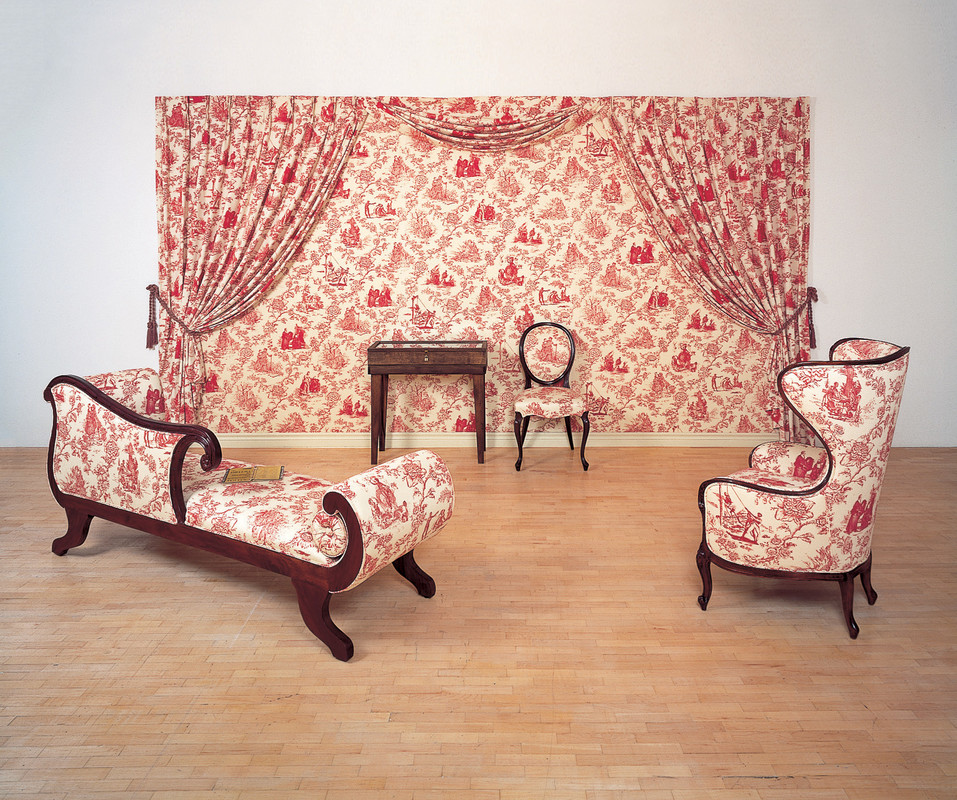
Renée Green, in collaboration with The Fabric Workshop and Museum, Philadelphia, Mise-en-Scène: Commemorative Toile (exhibition view), 1992, Photo credit: Will Brown, Image via fabricworkshopandmuseum.org
8. Theaster Gates, “Assembly Hall”, 2019-20
For “Assembly Hall”, American artist Theaster Gates converted four rooms in the Walker Art Center in Minneapolis into a gesamtkunstwerk. To this end, he took objects like books and furniture but also clay pots and other crockery from his personal collection, which is characterized by his strong interest in African American material culture, and transferred it all to the museum premises along with whole parts of his studio. Here, Gates is particularly interested in the “resurrection” of old, salvaged objects, which he places in a new context. Thus, their development and socio-cultural significance for the history of African American culture can be viewed from a new perspective. Meanwhile, he creates a space that celebrates that culture on the one hand, while also revealing its marginalization and exclusion.
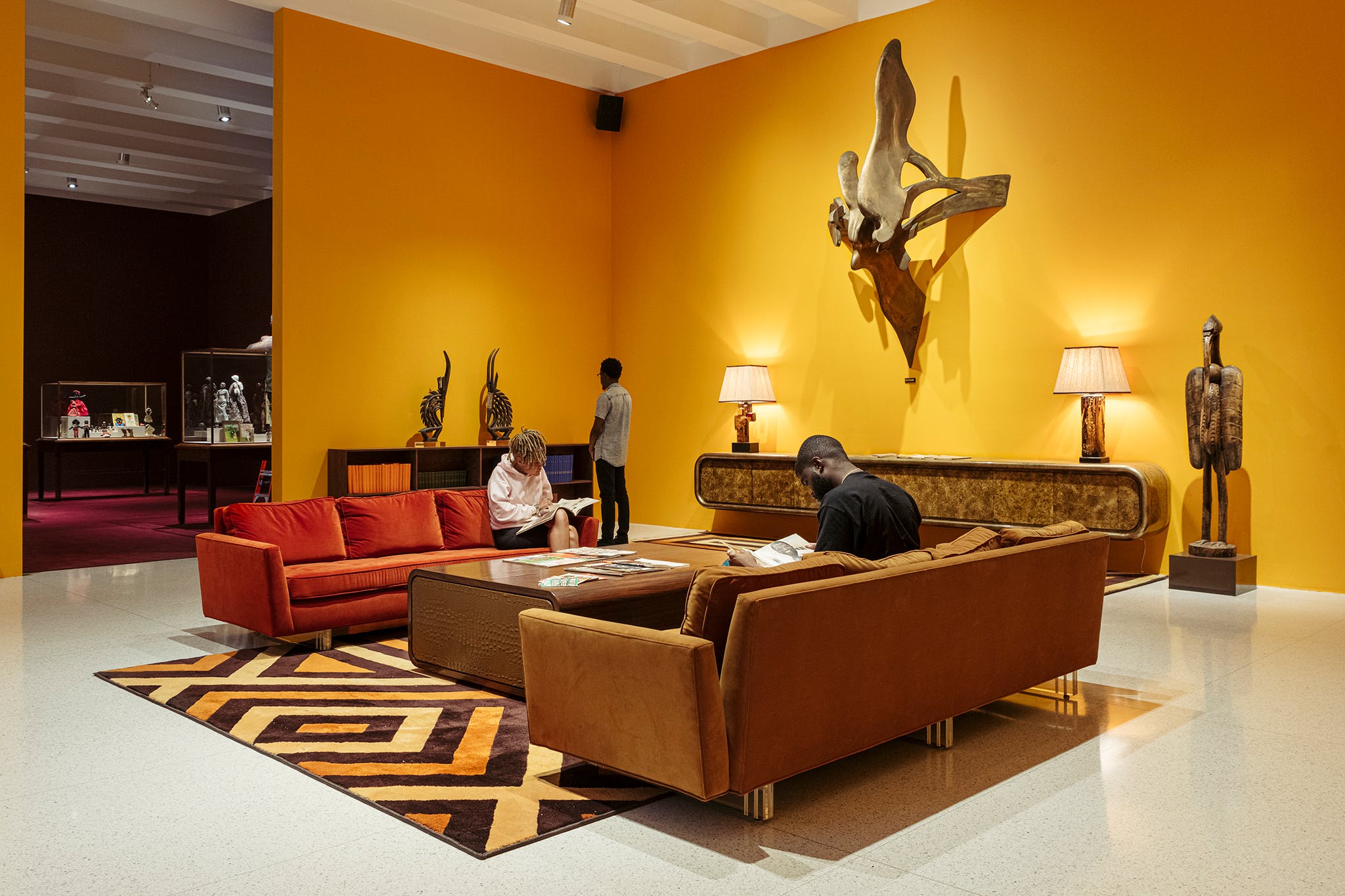
Theaster Gates: Assembly Hall, exhibition view, 2019-2020. Photo: Bobby Rogers, Walker Art Center, Image via walker-web.imgix.net
9. Hito Steyerl, “Factory of the Sun”, 2015
A neon-blue grid reminiscent of the sci-fi classic “Tron” guides the viewer’s gaze almost magnetically to the slightly tilted video projection screen in the center of the room. On it, a 20-minute film is screened that focuses on three subjects: Yulia, a Jewish computer game inventor of Russian origin, her brother, who dances to Donna Summer in the style of Japanese YouTube stars, and finally so called “poor images”, which represent surveillance themes such as drone attacks. Steyerl frequently breaks up political themes with pop-culture references to make them accessible to everyone. “Factory of the Sun” was first shown in the German pavilion at the 56th Venice Biennale (2015) and casts the artist rooms in a new, digital light.

Hito Steyerl, Factory of the Sun, 2015, courtesy of The Museum of Contemporary Art, Los Angeles, Photo © Justin Lubliner, Image via www.moca.org
10. Rimini Protokoll, “Situation Rooms”, 2013
For “Situation Rooms”, Helgard Haug, Stefan Kaegi and Daniel Wetzel, aka Rimini Protokoll, developed twenty rooms that represented twenty different people whose lives have been strongly influenced by weapons – from the chairman of an arms corporation to a Berlin shooting club to soldiers and war photographers. In this labyrinth, observers become actors: Each one holds a tablet out in front of them (similarly to the way you might hold a gun) and follows its narrative. On the tablet they can perceive the real room as well as utilize other virtual options with the help of augmented reality: By clicking on selected objects, they can play videos, for example. Interaction with the spaces and the other actors is expressly encouraged, while the screen remains omnipresent as a welcome almost necessary buffer.

Rimini Protokoll, Situation Rooms © Ruhrtriennale / Jörg Baumann, Image via www.rimini-protokoll.de









